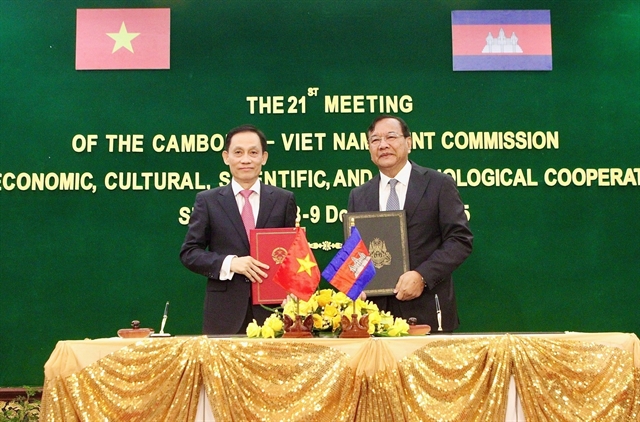 Society
Society

 |
| Production at an FDI firm in Dong Nai province. — VNA/VNS Photo |
ĐỒNG NAI — The southern province of Đồng Nai recorded a trade surplus exceeding US$1.6 billion in the initial quarter of this year, signaling a notable increase in export endeavors.
The provincial Statistics Office reported a positive trend, with export turnover in March reaching nearly $1.8 billion, an increase of 28.6 per cent compared to February. This contributed to a cumulative export value of $5.26 billion for the first quarter, representing a year-on-year growth of 7.8 per cent.
Growth was observed across all economic sectors, with the State-owned sector annually expanding by 3 per cent, the non-State sector by 6.4 per cent, and the foreign-invested sector by 8.5 per cent.
The US remained the top export destination for Đồng Nai, accounting for 27.97 per cent of the total with a value of $1.47 billion. Japan followed closely at 10.38 per cent ($546 million), with China (10.3 per cent, $542 million) and the Republic of Korea (5.82 per cent, $306.6 million) rounding out the top four markets.
While exports experienced a strong upswing, import turnover also surged by 29.2 per cent in March compared to February, reaching $1.3 billion. However, the first quarter import figure of $3.6 billion reflected a slight 2 per cent decrease year-on-year. China remained the largest import source with a value exceeding $1 billion, followed by the Republic of Korea ($578 million), Japan ($471 million), and the US ($188.5 million).
Several export commodity groups witnessed significant annual growth in the first quarter, including cashew nuts, up 45.7 per cent; coffee 95.6 per cent; wood products over 10 per cent; footwear 10.6 per cent; machinery, equipment, and tools over 4 per cent; and fiber 11.5 per cent.
Others experienced declines, including rubber down 6.5 per cent; apparel 1.4 per cent; computers and electronic products 9.3 per cent; and plastic products 1.7 per cent.
Looking ahead, Đồng Nai is actively rolling out numerous trade promotion programmes, with a focus on both traditional and emerging export markets, on the back of new-generation free trade agreements such as the Comprehensive and Progressive Agreement for Trans-Pacific Partnership (CPTPP) and the EU-Vietnam Free Trade Agreement (EVFTA). — VNS




